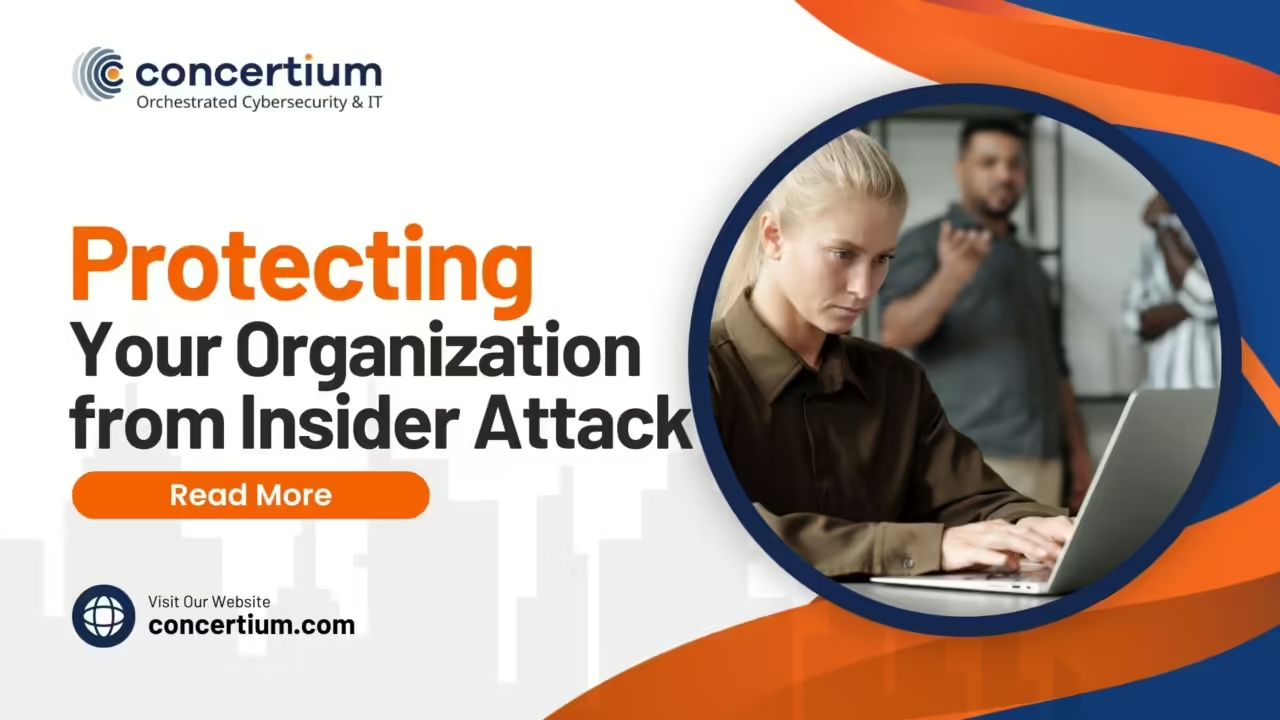When we think of cybersecurity, we often imagine a hooded hacker working from some remote location, targeting companies and individuals. However, one of the most dangerous threats comes from within an organization—insider attacks. Insider attacks are security risks that originate from within an organization and can cause devastating impacts. These threats can manifest in various forms, such as malicious insiders, compromised insiders, or even negligent employees unknowingly putting sensitive information at risk. A deep understanding of these threats, including how to detect and prevent them, is crucial for businesses to protect intellectual property, trade secrets, and sensitive data.
Insider Threat in Cybersecurity: A Growing Concern
Insider threats in cybersecurity represent security risks that involve employees, contractors, or third-party vendors with access to sensitive data or systems. Whether driven by malicious intent or unintentional negligence, insider threats pose a serious challenge to an organization’s security. Unlike external threats that require breaching defenses, insiders have privileged access, making it easier for them to cause significant damage. The threat landscape has evolved, and organizations now face both intentional and unintentional insider attacks that can lead to severe breaches and compromises.
One reason why insider threats are particularly concerning is that they often go undetected for long periods. By the time they are discovered, the damage might already be done, resulting in financial losses, reputational damage, or the exposure of trade secrets. Companies must prioritize insider threat management and implement robust insider threat programs to detect and prevent potential risks before they escalate.
Types of Insider Threats in Cybersecurity
Understanding the various types of insider threats is the first step toward effectively managing them. There are primarily four categories: negligent insiders, malicious insiders, compromised insiders, and third-party insiders.
Negligent Insiders: A Common Threat
Negligent insiders are employees or contractors who unintentionally put the organization’s sensitive data at risk. They may ignore security protocols, fall victim to phishing attacks, or mistakenly share confidential information. Despite lacking malicious intent, their actions can still lead to severe consequences, including exposing the organization to malware, credential theft, and external threats.
Malicious Insiders: The Intentional Attackers
Malicious insiders are individuals within the organization who deliberately act to cause harm. They may be motivated by financial gain, revenge, or other personal reasons. These individuals use their access to steal intellectual property, manipulate data, or cause disruption. Malicious insider attacks are particularly difficult to detect because these insiders often know how to avoid triggering security alerts.
Compromised Insiders: A Hybrid Threat
Compromised insiders are employees whose credentials have been taken over by an external attacker. This type of insider attack usually results from successful phishing attacks, malware infections, or social engineering. Compromised insiders can be just as dangerous as malicious insiders because the external threat actor has legitimate access, making it difficult to differentiate between normal and malicious insider behavior.
Third-Party Insider Threats: Vendors and Partners
Third-party insiders are external vendors, contractors, or business partners with access to an organization’s systems. They might not have malicious intent, but their lax security practices can make them vulnerable to external threats. Organizations must implement strict security policies and continuously monitor third-party access to minimize the risk posed by these insider threats.
Insider Threat Examples: Real-World Cases of Insider Attacks
Understanding real-world examples of insider threats helps illustrate the severity of these security risks and the need for proactive security measures.
Financial Sector Insider Threat
A malicious insider in a financial institution used his privileged access to steal customer data and sell it on the black market. The breach went undetected for months because the attacker carefully avoided any abnormal security alerts. This insider threat case resulted in significant financial losses and damaged the institution’s reputation.
Healthcare Insider Threat
A compromised insider in a healthcare organization fell victim to a sophisticated phishing attack. As a result, an external threat actor gained access to sensitive patient information. This incident led to a major data breach, and the organization faced legal action for failing to secure patient data.
Technology Sector Insider Threat
In a technology firm, a negligent insider accidentally shared confidential product designs with unauthorized individuals. Although there was no malicious intent, the incident resulted in the loss of valuable intellectual property and put the company’s competitive advantage at risk.
Insider Threat Detection Techniques: How to Recognize the Signs of Insider Attacks
Detecting insider threats is challenging, as these attackers already have authorized access to the organization’s network. However, there are several key indicators that can help identify potential threats.
Behavioral Indicators of Insider Threats
- Increased Privilege Abuse: Malicious insiders may escalate their privileges to access restricted areas.
- Unusual Data Access Patterns: Downloading or accessing data that is not required for their job function.
- Working Odd Hours: Logging in at unusual times, such as late nights or weekends.
- Suspicious Network Activity: Using tools or software that are not approved by the security team.
Technological Indicators of Insider Threats
- User Behavior Analytics (UBA): Tracks user activity and detects anomalies.
- Security Information and Event Management (SIEM): Monitors logs and security events for suspicious behavior.
- Machine Learning Models: Identifies patterns that indicate insider behavior inconsistent with their role.
Insider Attacks Prevention: Steps to Secure Your Organization
Implementing an effective insider threat prevention strategy requires a combination of technical and organizational measures. Below are key steps that organizations can take to reduce the risk of insider attacks:
Conduct Regular Security Awareness Training
Regular training ensures that all employees are familiar with security policies, aware of phishing tactics, and understand the importance of protecting sensitive information. Organizations should focus on security awareness programs that emphasize the potential risks of negligent or malicious actions.
Implement Role-Based Access Control (RBAC)
Limit access to sensitive data based on the user’s role within the organization. Role-based access control helps prevent unnecessary access and minimizes the potential impact of insider threats.
Monitor for Malicious Insider Behavior
Continuous monitoring of employee activity can help detect early signs of malicious insider intent. Security teams should set up alerts for suspicious behavior, such as unauthorized data access or large file downloads.
Use Multi-Factor Authentication (MFA)
MFA adds an additional layer of security by requiring users to verify their identity through multiple factors. This helps prevent unauthorized access, even if an attacker gains access to the user’s credentials.
Develop a Robust Incident Response Plan
A well-defined incident response plan enables organizations to quickly respond to insider threats. The plan should include steps for detecting, containing, and mitigating insider attacks.
Conduct Regular Risk Assessments
Regular risk assessments help identify potential insider threats and vulnerabilities within the organization. Security teams should evaluate user behavior, access patterns, and overall security posture to determine areas of improvement.
Implement Zero Trust Security Models
Zero Trust security models operate on the principle of “never trust, always verify.” This approach ensures that every access request is validated, regardless of the user’s role or location.
Implementing Insider Threat Prevention Policies and Strategies
Creating a comprehensive insider attacks management program involves developing security policies and strategies that cover both technical and human aspects.
Security Policies and Procedures
Establish clear security policies that outline acceptable behavior, data handling protocols, and the consequences of violating these policies. Regularly update these policies to address new threats in the cybersecurity landscape.
Regular Employee Background Checks
Perform background checks during the hiring process and conduct periodic reviews to ensure that employees are not involved in activities that could pose a security risk.
Data Encryption and Protection
Encrypt sensitive data to prevent unauthorized access. Even if a malicious insider gains access to encrypted data, they would not be able to read or manipulate it without the decryption key.
Enhanced Security for Intellectual Property
Implement strong access controls and data loss prevention (DLP) strategies to protect intellectual property. Track all access attempts and enforce strict rules for data handling and sharing.
Choosing the Right Insider Threat Prevention Tools
The right tools can make a significant difference in detecting and preventing insider attacks. Some of the top solutions include:
- Forcepoint: Offers insider threat management with user activity monitoring and behavioral analytics.
- ObserveIT: Provides visibility into user behavior and detects suspicious activity.
- Proofpoint Insider Threat Management: Uses machine learning to identify potential insider attacks.
- Microsoft Defender for Identity: Integrates with existing security infrastructure to detect abnormal behavior patterns.





